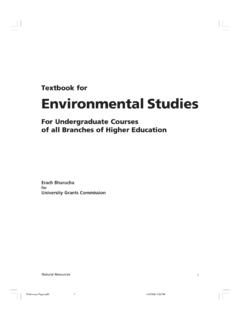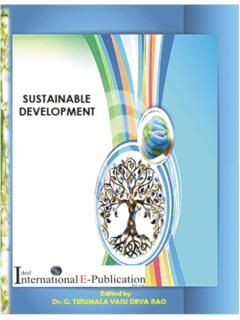Transcription of Activity Pack: Endangered Animals - Colchester Zoo
1 Activity pack : Endangered Animals KS1 & KS2 This pack is designed to provide teachers with information to help you lead a trip to Colchester Zoo focusing on Endangered Animals How to Use this pack : This Endangered animal Tour Guide pack was designed to help your students learn about Endangered Animals and prepare for a trip to Colchester Zoo. The pack starts with a few pages of background information for teachers outlining the classification of Endangered Animals , major problems facing Endangered Animals , and what zoos are doing to help Endangered Animals . The pack continues with suggested Endangered Animals to visit at Colchester Zoo, including a map of where to see them and which encounters/feeds to attend. The next section contains fact sheets about these Animals .
2 This includes general information about the type of animal ( what s its status, what threats does it face, etc.) and specific information about individuals at Colchester Zoo ( their names, how to tell them apart, etc.). This information will help you plan your day, and your route around the zoo to see a variety of Endangered Animals . We recommend all teachers read through this and give copies to adult helpers attending your school trip. The rest of the pack is broken into: pre-trip, at the zoo and post-trip. Each of these sections starts with ideas to help teachers think of ways to relate Endangered Animals to other topics. Then there are a variety of pre-made activities and worksheets. Activities are typically hands on games that introduce and reinforce concepts.
3 Worksheets are typically paper hand-outs teachers can photocopy and have pupils complete independently. Teachers can pick and choose which they want to use since all the activities/worksheets can be used independently (you can just use one worksheet if you wish; you don t need to complete the others). The activities and worksheets included in this pack are for a range of ages in KS1 and KS2. Feel free to use the activities and worksheets for students of all ages. We suggest using the pre-trip activities/worksheets prior to your trip to familiarise your pupils with vocabulary, context, and the Animals they will see. The at the zoo activities/worksheets typically require information your pupils can gather while they are at Colchester Zoo and are designed for completion during your school trip.
4 The post-trip activities/worksheets are designed to be used after your visit to build on information gathered during your school trip. Within these sections, the activities/worksheets can be used in any order. If you would like any more guidance, or have any questions about any of the information contained within this pack , please contact our education department at Contents Page Background Information 1 Map of Endangered animal Locations 4 Map Description 5 Suggested Shows to Attend 6 animal Fact Sheets 7 Pre-Trip Ideas, Activities and Worksheets 22 At the Zoo Ideas, Activities, and Worksheets 30 Post-Trip Ideas, Activities, and Worksheets 45 1 In 1964, the International Union for the conservation of Nature (IUCN) created the Red List of Threatened Species (IUCN Red List or Red Data List).
5 Various countries have their own lists, however the IUCN list is the main classification of Endangered species on a global level. The red list is created by various scientists and specialist organisations from around the world. Organisms (plants, Animals , fungi, etc.) are assessed based on a number of criteria including: rate of decline, population size, are of geographic distribution, degree of population fragmentation and current risks. Based on assessment, organisms are assigned to one of the red-list categories. The list is regularly reviewed and species can move up (become more Endangered ) or down the list (no longer threatened) based on new data Many people refer to all threatened category Animals as Endangered . Endangered animal Classification: Not Evaluated (NE) - Not yet been evaluated against the criteria Data Deficient (DD) - Inadequate information to make an assessment Least Concern (LC) - Lowest risk.
6 Widespread and abundant taxa are in this category. Near Threatened (NT) - Low risk. Likely to qualify for a threatened category soon. Vulnerable (VU) - Threatened. Considered to be facing a high risk of extinction in the wild. Endangered (EN) - Threatened. Considered to be facing a very high risk of extinction in the wild. Critically Endangered (EN) - Threatened. Facing an extremely high risk of extinction in the wild. Extinct in the Wild (EW) - Only survives in captivity. Extinct (EX) - The last individual of the population has died. The species is no longer alive anywhere. 2 Background Information Causes Why Animals become Endangered is important to understand, especially since humans are a major cause. Collectively, the threats to Animals are the HIPPO dilemma (which has nothing to do with hippos the Animals ).
7 Hippo is an acronym which stands for: Habitat Loss (Destruction and Fragmentation) Invasive Species Pollution Poaching Overuse Habitat Loss (Destruction and Fragmentation) The destruction of habitats is one of the most serious threats to wildlife across the world, and many habitats are affected. Habitat loss happens when humans convert the habitat into a different land use. With this new use, the Animals have nowhere to live. Some of the reasons habitat is lost include: houses (space to build homes and cities), roads, tourist resorts, farming, mining, factories, grazing pastures, and timber industries. Commercial and illegal logging as well as forest clearing for agriculture are the top reasons for habitat loss worldwide, especially problematic with rainforest Animals .
8 Invasive Species (Alien Species, Introduced Species) In their natural habitat, every animal has a specific role (a niche). The natural ecosystem always stays in balance, populations of specific Animals or plants might change but will return to a natural balance. However, when Animals or plants that do not belong in the habitat are introduced into the environment they can disturb this balance. Animals are sometimes moved on purpose, or sometimes accidentally transported. For example: foxes and cats have been introduced around the world and cause the decline in many species of birds and small mammals. Rats have been introduced to most of the world, and will eat almost anything. Rats cause a lot of problems on islands, especially islands with ground nesting birds, as they eat the chicks and eggs.
9 The 10 worst invasive in the world are: kudzu vine, black rat, Asian tiger mosquito, cotton whitefly, snakehead fish, Asian longhorn beetle, cane toad, European rabbit, and Nile perch. 3 Background Information Causes Pollution Pollution is anything that doesn t belong in the natural environment. Physical and chemical pollution can damage the quality of water, air and soil. One type of pollution is chemicals to control insects and plants (herbicides, pesticides and fertilisers). These can directly poison Animals , and can cause food chain to collapse. Litter is another type of pollution. Some litter (food products) can biodegrade relatively quickly and return to things found in nature. Other types of litter, such as plastic, do not biodegrade. Plastic is inert, and if dropped somewhere, will stay there for hundreds or even thousands of years.
10 Without a way to remove plastic, it accumulates in rivers and flows to the sea. All the oceans of the world now have giant patches of floating plastic rubbish mainly caused by people dropping it on land. Air pollution is a major cause of problems for humans and Animals Chemicals in the air make it hard for Animals to breath. Noise and light pollution are also a major course of death in birds, who fly into lit windows and the noise from boats and sonar confuses whales and results in them getting beached. Poaching Poaching is simply illegal hunting. Hunting of Endangered Animals is illegal in many countries. However, because there is a lot of money in the illegal wildlife trade, people still hunt these Animals . This includes hunting for fur, horns, ivory, medicine, etc.






